CSS Filter PropertyCascading Style Sheets (CSS) offer a multitude of tools to manipulate the appearance of web elements, allowing developers to craft visually appealing and dynamic user interfaces. Among these tools, the filter property stands out as a powerful feature, enabling the application of various visual effects to HTML elements with ease. What is the CSS Filter Property?The filter property in CSS provides a way to apply graphical effects like blur, grayscale, brightness adjustment, contrast modification, and more to HTML elements. It allows web developers to alter the rendering of an element's content before it is displayed on the screen, enhancing creativity and design possibilities. Syntax and UsageThe syntax for the filter property is straightforward: Code: Here, <filter-function> refers to the specific filter function or a combination of functions to be applied. Multiple functions can be used simultaneously by separating them with spaces. Common Filter Functions1. Blur()This function applies a blur effect to the element, giving it a softened appearance. The parameter specifies the amount of blur. For example: HTML Code: CSS Code: Output: 
2. Grayscale()It converts the element to grayscale, removing color information. The parameter specifies the amount of grayscale, ranging from 0 to 100%. For example: HTML Code: CSS Code: Output: 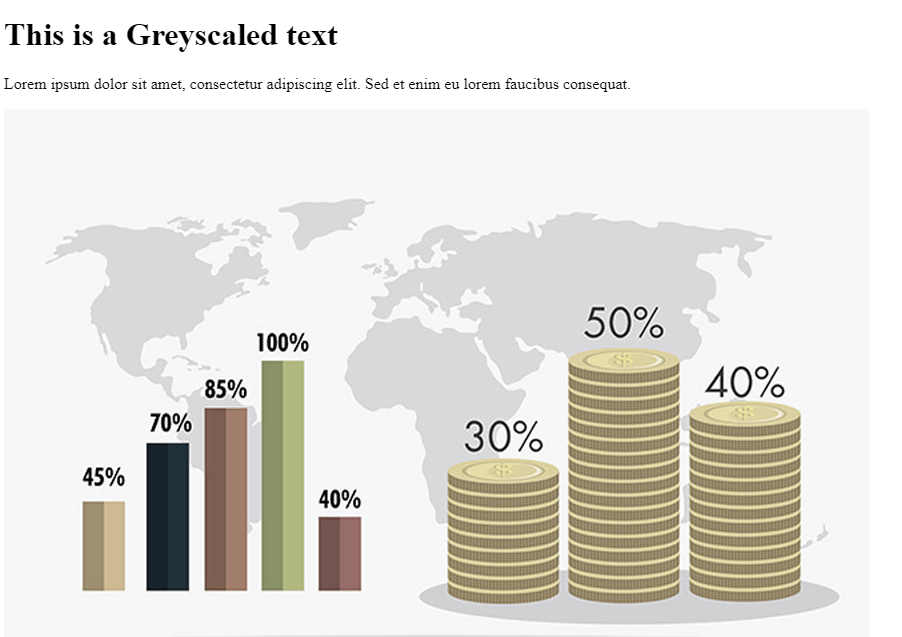
3. Brightness()Adjusts the brightness of the element. A value less than 100% darkens the element, while a value greater than 100% brightens it. For example: HTML Code: CSS Code: Output: 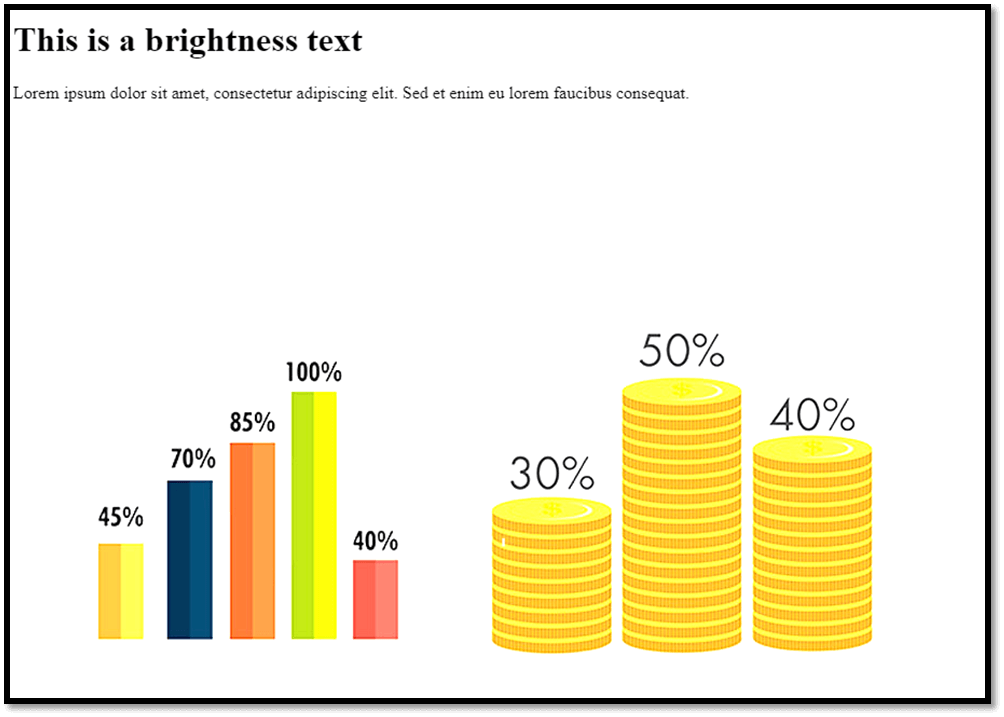
4. Contrast()Modifies the contrast of the element. A value less than 100% decreases contrast, while a value greater than 100% increases it. For example: HTML Code: CSS Code: Output: 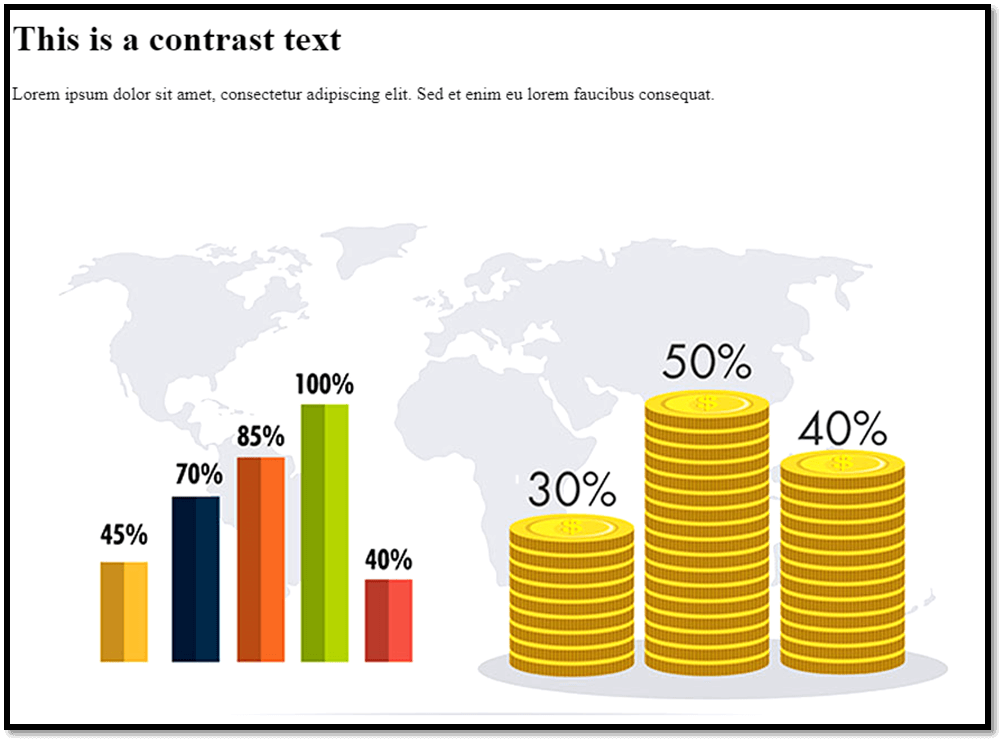
5. Drop-shadow()Applies a shadow effect to the element's content. It takes parameters for horizontal offset, vertical offset, blur radius, spread radius, and color. For example: HTML Code: CSS Code: Output: 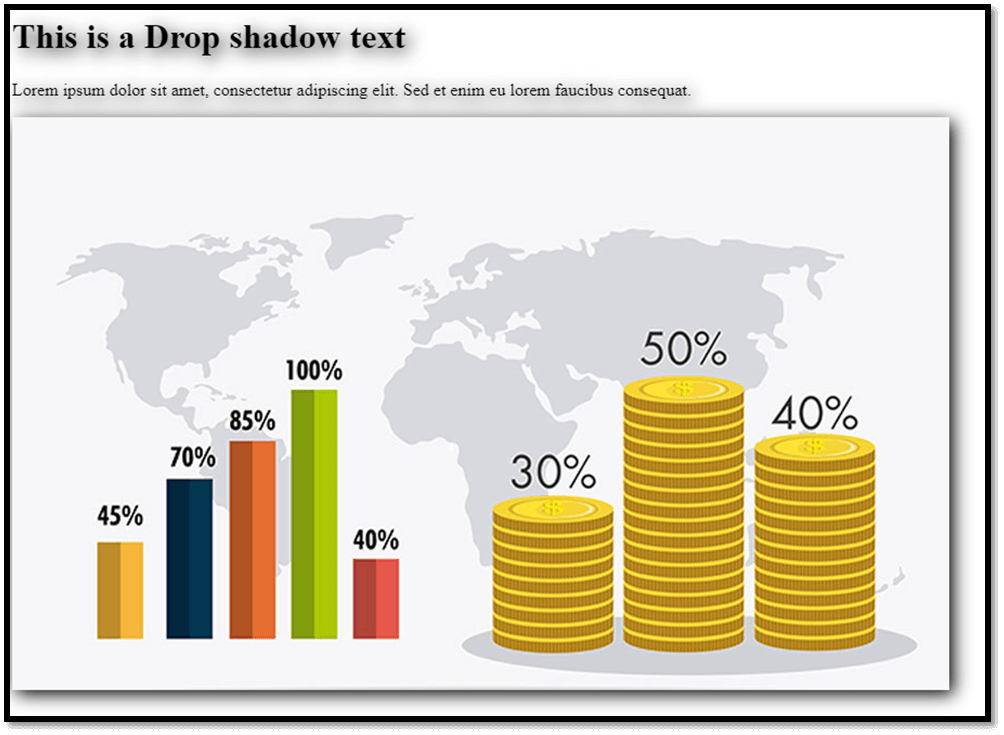
6. Hue-rotate()Rotates the colors of the element. The parameter defines the number of degrees in the color wheel to rotate. For example: HTML Code: CSS Code: Output: 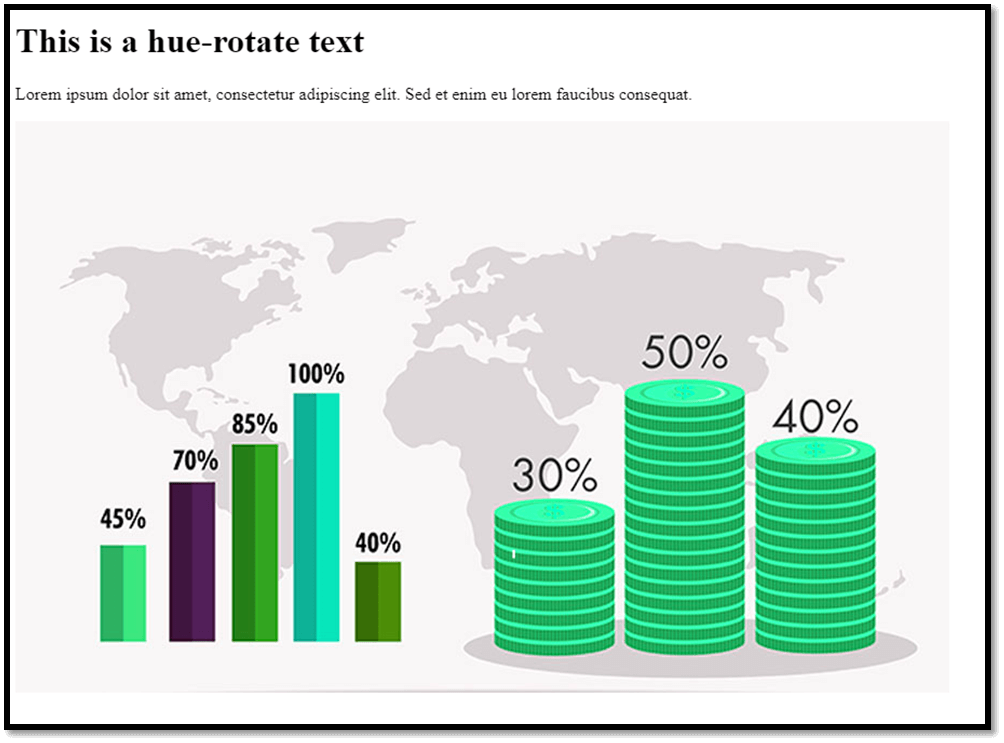
Combining Multiple FiltersMultiple filters can be combined to achieve complex visual effects: HTML Code: CSS Code: Output: 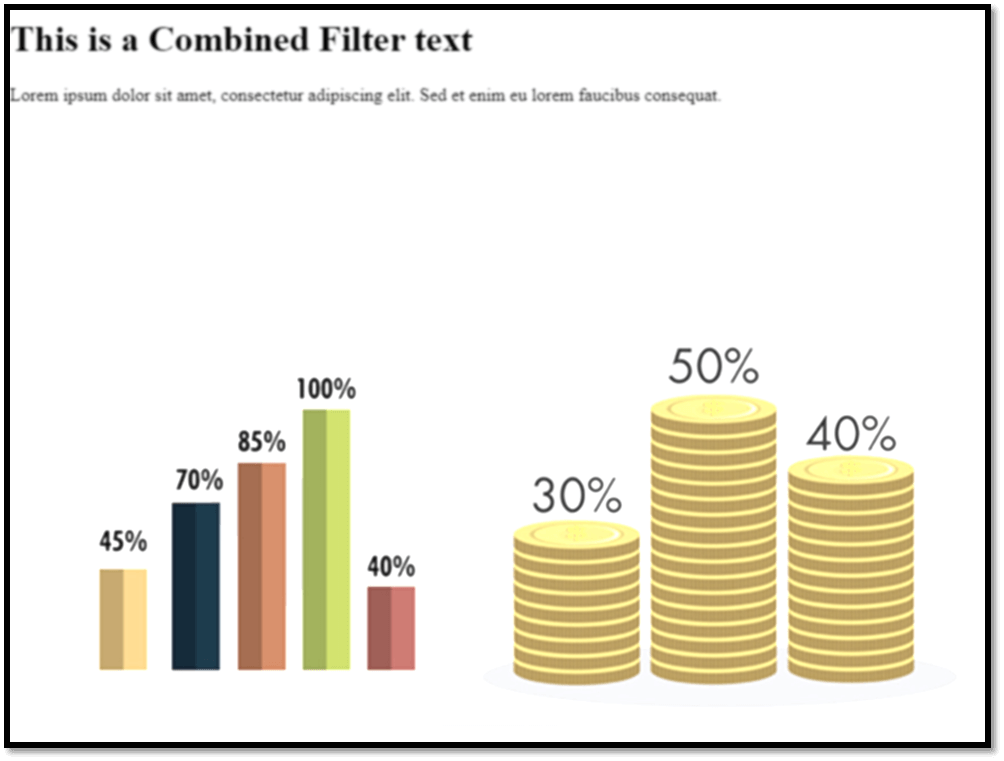
Browser Compatibility and ConsiderationsWhile CSS filters offer powerful visual effects, it's important to consider browser compatibility. Most modern browsers support CSS filters, but some older versions might have limited or no support. Additionally, excessive filter use can impact performance, especially on less powerful devices. Always test and optimize filter applications to ensure a smooth user experience across various devices and browsers. Advantages of CSS Filter Property
Disadvantages of CSS Filter Property
Applications1. Image Manipulation: Filters can be used to manipulate and enhance images directly within web applications without needing external image editing software. They enable tasks such as blurring, adjusting brightness, contrast, saturation, and applying color effects directly to images displayed on web pages. 2. User Interface Enhancements: Filters are commonly employed to improve the visual appeal of user interfaces. For instance, applying drop shadows to buttons or elements to create a sense of depth and interactivity or adding hover effects with filters to provide visual feedback to user interactions. 3. Background Effects: Filters enable the creation of captivating background effects. Using blur effects or adjusting brightness and contrast on background images or elements can help in achieving visually appealing and subtle backgrounds that complement the overall design. 4. Accessibility Improvements: Filters can serve to enhance accessibility when used thoughtfully. For instance, applying grayscale or adjusting contrast can make content more readable for users with visual impairments, ensuring better accessibility compliance. 5. Creative Animations and Transitions: Filters can be combined with CSS transitions and animations to create engaging and dynamic effects. Smoothly transitioning between different filter states on hover or click events provides an interactive and visually appealing user experience. 6. Visual Feedback and Notifications: Filters can play a role in providing visual feedback and notifications. Applying temporary effects such as changing an element's brightness or applying a slight blur to signify interaction or a change in status can help users perceive these changes more intuitively. 7. Branding and Design Consistency: Consistent use of filters across a website or web application can contribute to branding and design consistency. Applying specific filter effects consistently to elements or images can reinforce a particular visual style or theme. 8. Gaming and Interactive Experiences: In gaming interfaces or interactive experiences, filters can be employed to create various visual effects like vignettes, color shifts, or distortion effects, enhancing the immersive quality of the gaming or interactive environment. 9. Real-time Data Visualization: For dashboards or data-driven applications, filters can help visualize data dynamically. Applying color filters or adjustments based on data parameters can help users perceive and understand information more effectively. 10. Experimentation and Creativity: Lastly, CSS filters offer a playground for experimentation and creativity. Developers can explore and combine different filter functions to create unique visual effects, pushing the boundaries of web design and user interface innovation. ConclusionThe filter property in CSS empowers developers to unleash creativity by applying a diverse range of visual effects to web elements. Whether it's adding a subtle shadow, adjusting colors, or blurring backgrounds, CSS filters offer a versatile toolkit for crafting engaging and visually appealing user interfaces. However, it's crucial to use these effects judiciously, considering both browser compatibility and performance implications for a seamless user experience. Understanding and leveraging the CSS filter property can significantly enhance the visual aesthetics of web design, contributing to more engaging and immersive user experiences on the web.
Next TopicCSS Hacks
|
 For Videos Join Our Youtube Channel: Join Now
For Videos Join Our Youtube Channel: Join Now
Feedback
- Send your Feedback to [email protected]
Help Others, Please Share










